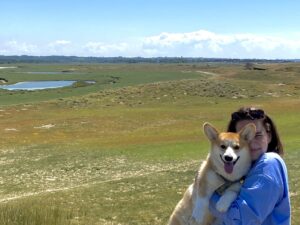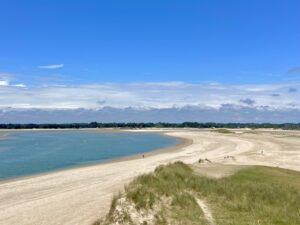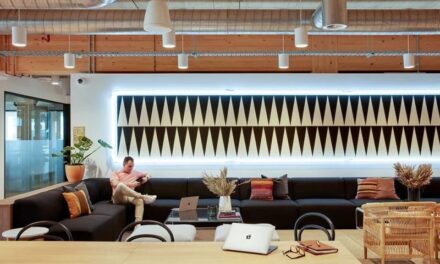Embracing the essence of summer on a delightful Tuesday in June, I find myself basking in the pleasant weather as I wrap up my work for the day. The anticipation builds as I prepare to shut my laptop and embark on a leisurely stroll along the vast shores of French Normandie’s magnificent beach.
In this moment, I am faced with a delightful dilemma — should I indulge in a refreshing swim or simply revel in a walk? The possibilities seem as vast and boundless as the sea or even the ocean (which I’m heading to) itself. Welcome to the world of “workation” — a transformative concept that I am eager to share with you, both from a practical standpoint and through the lens of my personal journey.
In this article, we will delve into the captivating notion of combining travel with work — workation — a lifestyle that has bestowed upon me a newfound sense of flexibility and fulfillment. I want to share with you how I got started in this form of workation, what lessons I’ve learned from my trips and how my company, PhotoAiD, has helped me in this.
Join me as we delve into the heart of workation and unravel whether this lifestyle is truly as enchanting as they portray it to be!

First, what is a workation?
Workation is a term that consists of two words: work and vacation. Thus, from the combination of these words, a peculiar hybrid is formed, which literally can be translated as workation or work vacation. But what does this mean in practice?
Workation is simply a specific formula for performing work duties, which combines them with leisure. Despite appearances, it is not at all like working on vacation. Opting for this arrangement, one does not use the days off to which one is entitled.
Instead, one works during the hours set by the employer in exactly the same capacity as in the office and pays the standard salary for this. However, this is done in a typically vacation destination, the charms of which can be enjoyed without restriction in the afternoons or during weekends.
A workation is therefore a very interesting solution, which is often treated as one of the important non-wage bonuses. Why? One of the reasons is to better maintain work-life balance.
What are the pros and cons of a workation?
Using workation once in a while can bring many benefits. First of all, it increases work motivation and efficiency. This is because being in an attractive environment encourages you to tackle your responsibilities as efficiently as possible in order to enjoy the charms of a vacation destination.
This significantly improves work-life balance. Staying in an interesting place can also have an impact on increasing creativity. In addition, if the whole team benefits from the workation, it promotes its integration.
However, it should be remembered that a workation also has its downsides. First of all, it cannot be treated as a real vacation. During a workation, you have to perform work duties all the time, and some people may have trouble concentrating due to the holiday activities around them or feel frustrated because they can’t enjoy them all day.
Working hours can also be a problem related to workation. If you have a profession that requires you to be available at strict hours, this limits your ability to travel — workation in a different time zone may not be the best idea at the time.

Things I learned during my workation
While on my journey of workation in Normandie, I unearthed invaluable lessons that have definitely influenced my perspective on both work and life. I always struggled to find work-life balance. It seemed so elusive amidst my bustling routine.
However, the need to get out of work and explore new place naturally helped me in creating boundaries and prioritizing tasks. I found myself very creative when it comes to places where I worked.
The remarkable fusion of flexibility within workation not only invigorated my productivity and ignited a new wave of creativity, but also unveiled how an ever-changing backdrop can breathe life into even the most mundane tasks.
I honed the skills of adaptability and resilience. The landscape of Normandie, juxtaposed with my work commitments, became a canvas on which I cultivated self-discipline and the art of time management.
Why Normandie?
As it was my first time ever blending work with exploration of a new place, I did not want to jump into the deep end. That’s why I opted for a place in the same time zone and similar culture.
I stayed in Europe, so it was easier to navigate all the necessary documents before the trip. However, it was still an absolute new landscape and it brought a lot of adventures and creativity.
I believe it’s a good idea to keep doing baby steps. There’s no need to rush and you can always choose a more exotic destination for your next adventure.
Workation for all: tips and recommendations
This kind of trip requires careful thought and preparation to ensure a smooth combination of work and travel. Before you pack your bags and embark on your journey, it is important to assess the feasibility and suitability of a workation for your individual circumstances.
Consider factors such as the nature of your work, the availability of necessary resources at your chosen destination and time zone differences. Once you’ve determined that workation is feasible, it’s time to delve into the practical steps that will pave the way for a successful experience.
Planning is key, from choosing the right accommodation with a conducive work environment to setting up reliable connectivity. What’s more, maintaining a delicate balance between work responsibilities and travel commitments is crucial to making the most of both worlds.
Work etiquette includes effective time management, communicating with colleagues, and setting clear boundaries to ensure high productivity while savoring the joy of discovery.

Workation impact on well-being and job satisfaction
Balancing work and life has long been a principle we have consistently adhered to, insisting work should not mix with our private hours. But still we look for opportunities to get out of the house in the middle of the work day for a doctor’s appointment, a session at the gym, or a leisurely walk.
We strive to harmonize our professional and personal lives in a way that allows us to pursue work, family and passions simultaneously, without time or location constraints. And this is the idea behind a workation — to strive for a synthesis in which our vocation and personal life not only coexist, but also work together to ignite true satisfaction.
Moving to 2025, an era in which the presence of Generation Y is expected to make up a staggering 75% of the workforce. This generation exudes a deep commitment to flexibility, and perhaps even a need for it. This inclination manifests itself in many ways — from negotiating working hours to choosing where to work. Opting for a completely new place can be a wonderful work-life balance booster. The abundance of surrounding attractions encourages us to refrain from wasting time on unnecessary overtime.
In order for work to truly pay dividends, it is necessary to establish clear goals and set boundaries. This imperative underlies the effectiveness of combining work and vacation.
Summary
Successful workation is based on setting goals and establishing boundaries. This principle not only increases productivity, but also enriches the coexistence of work and leisure.
As I bid farewell to my enchanting time in Normandie, I am reminded that embracing the essence of flexibility can indeed turn the ordinary into the extraordinary. Through this journey, I have unlocked a symphony of life that combines work and the melody of exploration into something that actually works.









